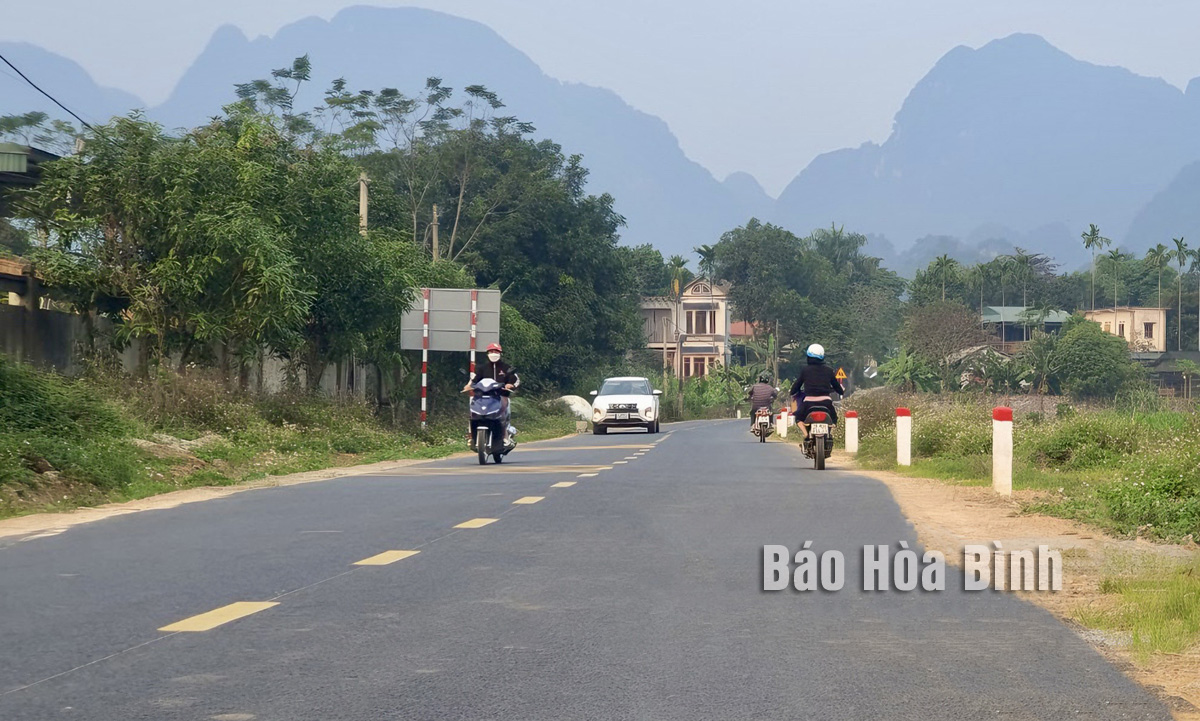
Kim Boi district is drafting 23 planning projects which are expected to help boost the local socio-economic development, attract investors, and mobilise resources for development, said Vice chairman of the district People’s Committee Tran Tuan Son.
They include the one on Bo urban area development until 2045, 20 zoning, and 12 on rural residential areas in communes.
Road in Mo Da hamlet, Bo town in Kim Boi district, upgraded and expanded to serve local tourism development.
According to the spatial development orientation of Hoa Binh province by 2020 with a vision to 2030, Kim Boi is located in Sub-Region 2 in the east and south of the province. It’s the province’s sub-region for industry - tourism - trade - agriculture - forestry development. The district connects to important national economic corridors such as Ho Chi Minh Highway, National Highway 21, and National Highway 12B and adjacent to Hanoi and the provinces of Ha Nam, Thanh Hoa, and Ninh Binh. In addition, the district is located on the main economic corridor Luong Son - Kim Boi - Lac Thuy which borders Hanoi.
Planning is identified as one of the strategic breakthroughs to successfully implement the targets set by the Resolution of the 17th provincial Party Congress. It is expected to help attract investment and boost local socioeconomic development. Therefore, the Kim Boi district People's Committee continues to allocate resources to soon complete the appraisal dossier. However, according to the committee, to increase their efficiency, general planning and zoning need to be integrated with other specialised plans. This requires further coordination between localities, departments, and agencies to promptly remove difficulties and obstacles.
Planning is an important legal tool to manage and mobilise resources and ensure long-term development. It will be a basis to build medium-term public investment plans, construction plans, urban–rural development plans, and specialised technical plans in the district.
Son affirmed that the district will prioritise resources to complete the planning work which is considered one of its key tasks now.
The Hoa Binh provincial People's Committee held its monthly meeting on March 26 to review the progress of key projects, assess budget revenue and public investment disbursement, provide feedback on draft documents for submission to the provincial Party Committee's Standing Board, and discuss other important matters related to the committee's governance activities.
Playing a key role in Hoa Binh province’s economic development, Luong Son district has been focusing on science and technology development, innovation, and digital transformation.
Identifying the application of online public services as a key step in administrative procedure reform and e-government building, Kim Boi district has proactively provided services and supported residents and businesses in accessing and utilising full-process online public services promptly and efficiently. The locality aims to lift the rate of end-to-end online public services to over 90%, with all officials and civil servants handling tasks in the digital environment.
Nguyen Anh Tuyet, hailing from a family steeped in the ancient art of herbal medicine, is transforming local medicinal herbs into high-value concentrated extracts, elevating their worth and healing potential.
Nguyen Phi Long, an alternate member of the Party Central Committee, Secretary of the Hoa Binh provincial Party Committee, and head of the steering committee for the province's key projects, chaired a conference on March 25 to discuss measures for implementing the project on constructing the Hoa Lac - Hoa Binh road and upgrading the Xuan Mai - Hoa Binh section of National Highway 6 under the public-private partnership (PPP) model.
Administrative reform has been identified as a key priority in enhancing state governance, improving the business environment, and facilitating services for citizens and enterprises.



